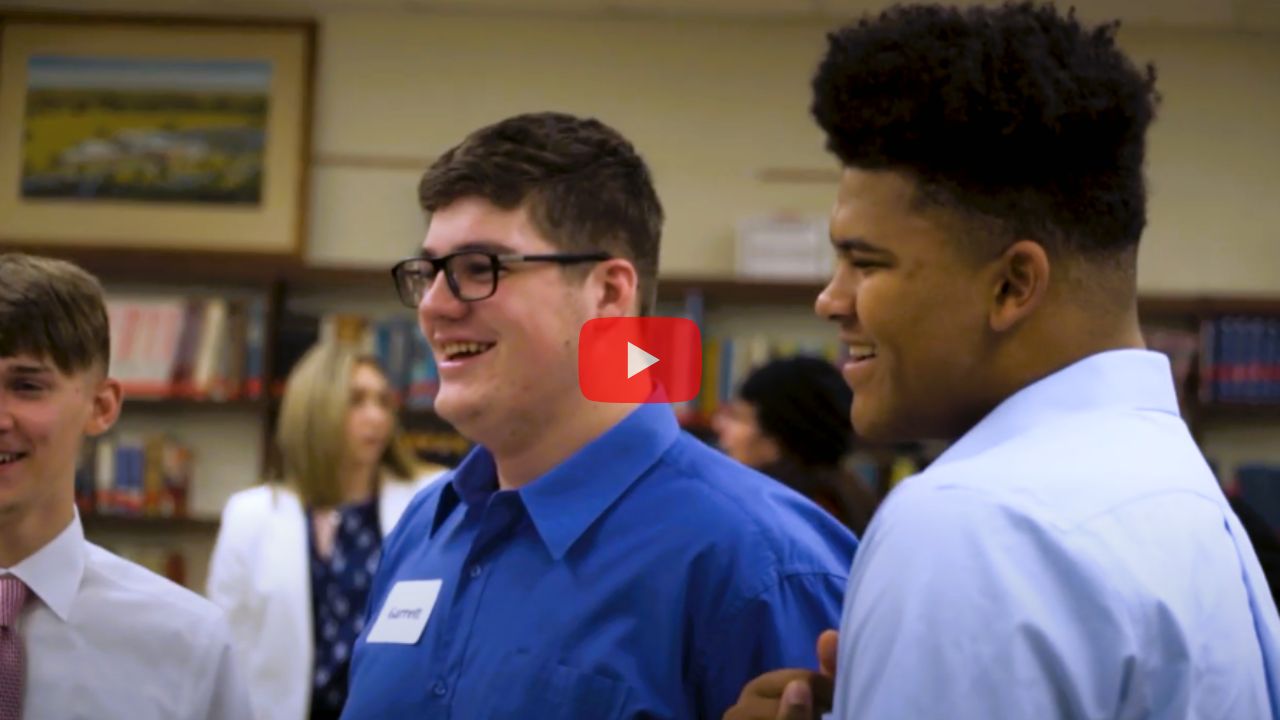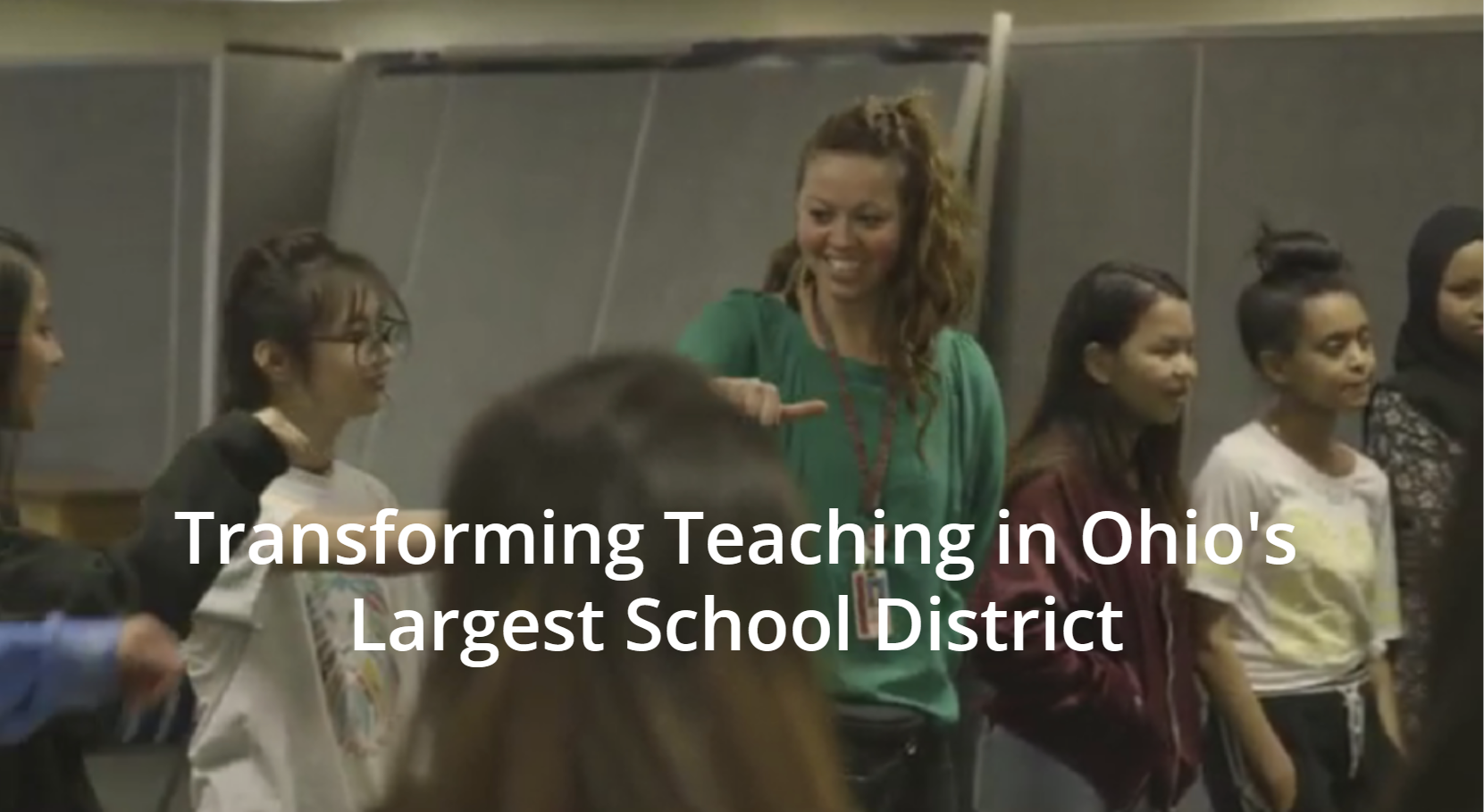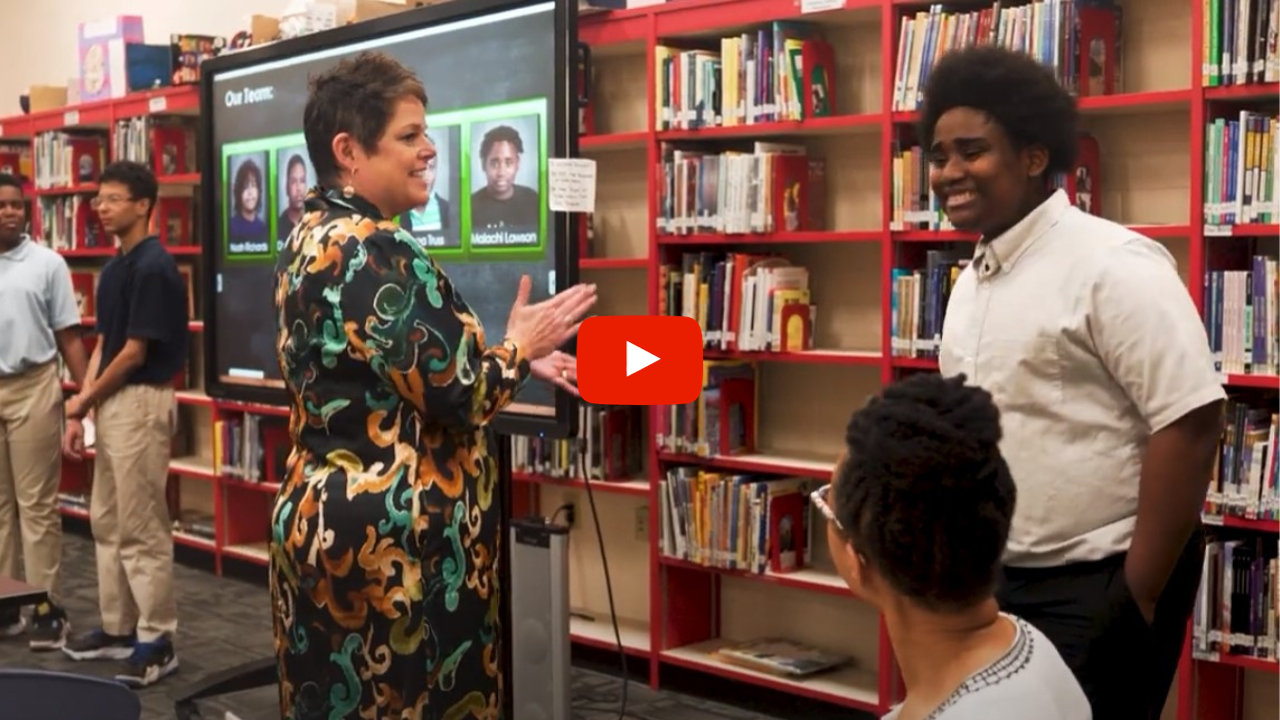In this episode, Tim and Alison recall the poor quality of the solutions presented to the first business CEOs in a semester and why the deliverables were not as important as the process. They also discuss how the use of an electronic portfolio captures student growth and fosters the critical skills of reflection and self-assessment.
Tim: Coming off the heels of the end of the first semester together, I was wondering if you could tell me about some of the fears you had maybe early on in terms of the kids’ performance or what they were researching or anything like that?
Alison: Yeah, sure. This semester really started out with really the first business on Day 3, and the CEO presented the challenge to the students. They had three weeks to solve it, and they really knew nothing at all at that point. These kids don’t have backgrounds in business or entrepreneurial studies, and they’re thrown in, they’re wide-eyed, and they’re looking to us for as many resources as they can get. Please give us the answer! Please tell us how to get there! We don’t know anything.
I remember through the trainings with you and Doris that it’s really important that as teachers, we’re not there to give them answers. We’re not there to solve these problems for them. We’re not there to even ask leading questions that are imposed with our own personal thoughts of what the solution should be.
So as we were moving through these first three weeks, I’m watching the process and I’m thinking, “Oh gosh, these kids are never going to get there. They’re just way behind on these solutions.”
Tim: You were pretty stressed out a few times, I remember.
Alison: Absolutely. Also, on a personal note, I knew this company from the community and wanted these students to do a good job for them. I really felt like this was a cool opportunity for them to work with a local startup. The CEO was really engaged and excited to have the students there. But I thought, “Oh my gosh, where are they going to get to?”
So presentation day came three weeks later with the CEO. The students got up there and they were very proud of what they were presenting, and rightly so. Really, coming in with nothing and the fact that they did get somewhere by the end of three weeks was impressive. But to be honest, I really was underwhelmed by their solutions. I thought, “Oh my gosh, this is an embarrassment. These kids did sub-par work. They really didn’t come up with anything innovative that I’m sure this company wouldn’t have already dreamed up themselves.”
Although the company did walk away and say, “Hey, this was great. They did way more research than we’ve done in the past, and we’re walking away with some good things and some cool ideas,” I knew at the heart of it, really, the students hadn’t done anything earth-shattering. I thought, “Wow, that’s disappointing. Is this what this is going to feel like?”
But I remember you and Doris both said, “Trust us. This is how the first one always goes. This is the learning that has to happen, really, in the first one. They need to go through this failure.” They need to experience what it means to put a slide up that only shows they did surveys with 10 people and based their entire solution around those conversations with a very small portion of society. It’s through that failure, that initial experience, that they realize, oh, we might need to step it up next time around.
And sure enough, going into Business 2, we did. I remember we called it the statistics smackdown at that point. We prompted them with a bunch of different articles about data-driven decision-making and all sorts of things that helped them really understand some of the big gaps they had in the first problem-solving that they had done.
So for me, I was in a place thinking, “Gosh, this final solution end product that they’re presenting actually might not be that great, but knowing that they’re going through the process,” that time and time again throughout the semester, they go through a process. They’re almost mini units, right? We have every three weeks or however you design it that the students are going through different challenges that they have to solve.
Knowing that they have multiple opportunities to move through this process and not really be concerned with the end product. Really, the product doesn’t matter, and we as teachers can’t be focused on that. We can’t be most concerned that they come out with the biggest and brightest best new innovation for a CEO to run with.
The truth is the whole reason we set this up, again, isn’t because we care about students learning business or being the most entrepreneurial. It’s great if they go and start a business afterwards, but what we’re most interested in is that they’re learning these skills that are inherently embedded in the entrepreneurial process.
I don’t know if that’s true with your experience.
Tim: Yeah. Doris is very clear whenever she meets with all the CEOs, but especially the ones that come on board early on. The first business, she’ll say, “Hey, what you’re going to get is probably not going to be great, just so you know.” Even though she says that, and for the most part, it’s been true, it’s been – probably the least compelling solutions they’ll come up with are the first ones because it is the first one, it’s still a value to the CEO.
We still hear back, and they say, “No, it was fine. It was good. We got valuable stuff out of it.” So yeah, it’s not the best. It’s not going to be anywhere near as good as it’s going to be later on, but it’s still valuable.
It’s also interesting when we have teachers come and watch the presentations. If they only come for the first one, they think they’re very impressive, which they are. But it’s when they return for Business 2 or Business 3 or the final project that those people from the outside see the tremendous growth that takes place and they realize that those solutions they came up with for Business 1 and 2 and 3 are really part of the process. They aren’t the product. And even the last project is not the product, it’s still a process.
I think that’s also a really important distinction to make because there are programs we’re aware of that are really entrepreneurial studies programs and they’re based more on sort of the Startup Weekend model, which is very valuable. They identify a particular problem, they form teams, and they try and solve it.
What we think is different about our program is that we have students working on real business problems that are real and urgent for those people, and they develop all of these skills all along the way. So by the time they get to the final project which is creating their own solutions for problems that matter to them, they’ve had all of this experience, and from the teacher perspective, we’ve seen the evidence of growth.
Alison: Yes. That’s exactly where – as you were talking, my brain was thinking about the growth is what’s really most important for us in this whole process, right? We’re most interested in them developing these skills so that they can grow into the kinds of citizens, leaders, global change-makers we hope to see.
I was hoping you could share a little bit about the capstone, actually, that we have the students do, because I think it’s a really nice package in the end for something to show their growth.
Tim: Yeah, the capstone is pretty standard. It’s a portfolio-based final project. Different schools and different programs have capstone experiences, and it’s usually the last thing. It’s not a novel term by any means.
The process for it is very reflective. What we ask students to do is to put together an electronic portfolio that will eventually become a Google Site that they can share with anyone in the world. We ask them to put together this portfolio that demonstrates their growth. So in their own words, using their own evidence, they show how they’ve changed.
We have a variety of different questions that we ask them, requirements that we have. They have to talk about how they grew personally, how their world view has changed, how their approach to team-based collaborations has changed. We have these kind of specifics. What they have to do is go through the work that they’ve generated over the course of the semester and they have to select items. They will then select items and then reflect on them, and they can be everything from personal blog posts that they wrote during the semester, they could be videos of presentations they’ve done, slide decks that they’ve helped to create, and they have to tell their own growth story through this capstone.
It really came from my days as a humanities teacher. Portfolio-based assessment has been around for a long time. I think what’s different about this is it’s occurring at the end of the class. For a lot of kids, they’re seniors or juniors, and they then turn and use these capstones in ways we haven’t anticipated.
We’ve had students use these in the college admissions process. We’ve had seniors use these at college when they’re looking at different clubs or activities and they want to showcase what they can do. It’s pretty compelling because they’ve generated it all themselves. It even contains video of themselves reflecting on how they grew as a learner, and that’s a pretty powerful medium.
I think to sort of package that together, it is both the process and the product, in this case, the capstone is.
Alison: True. That was what I was thinking through there, that in this final element, they’re pulling together all this proof of growth. Is it fair to say that they really value the process as they’re reflecting back on it as more important than what they’ve produced, so to speak?
Tim: I think that’s fair to say. They’re certainly proud of different moments. I think when you start looking at capstones and you’re looking at a lot of them, you start to detect these patterns. Kids will say, “Oh, I loved this presentation because that was the moment where I answered the really hard question in front of the CEO.” So in that case, it’s kind of hard to define where that goes.
I’ve seen a lot of evidence of kids identifying points along the way within those capstones that really do demonstrate growth and that they’re truly proud of and they’re excited about, and I think they recognize it.
We even have this activity we do at the end of class where we go back and watch some of the first videos. You were part of that for the first time. It’s funny because when the kids watch themselves present from the beginning of the course, the presentations are so terrible. The kids are mumbling and they’re leaning against the wall and some of them aren’t speaking, and they’re laughing. And then you have this moment, at least I did as a teacher, you have this moment where you’re like, well, but that was just August.
Alison: Right.
Tim: You know? We weren’t watching kindergarten videos. Like, we were just watching you guys a few months ago. I think that’s where you see that evidence of the process and what that means and how kids can see the value in it.
Alison: Absolutely. We talked a lot about doing school better, and I know that for most classrooms, the only way to really judge where the student is at or assess them in their stage of growth is to give them a test or have them give back their mastery of content. In a lot of ways, it’s about that specific moment in time, that specific product, if you will, that they’re most concerned about producing.
I’m curious to hear your thoughts on how the importance that we put on process lends itself into the wider scope of doing school better.
Tim: I think the difference, and this is something that is pretty common in most schools, is the first thing that gets ditched is any reflective process. When you get into school and you have a snow day or you get behind in your content, you don’t cut the assessment, you cut the reflection for some reason. I think that’s a shame. As you mentioned, let’s say you take a multiple choice exam. That is your product. You get a grade on it, the teacher hands you that grade, and then the next day, you start the next unit, and you totally miss – in most cases, not in all cases, but in most cases, the student misses the opportunity to not only understand why they missed it, but why they didn’t get it in the first place.
I think that’s a problem for modern education. We’re very test-driven, results-oriented. I think there’s a less perceived value on that type of metacognition, which is a shame because I think that’s where a lot of the process comes from, to be able to think about your performance, to think about your thinking, with the time and space to do it.
Alison: Absolutely. And really, if the intent is to foster skills and really over time see this growth, having that growth mindset that I know we’ve mentioned in the past is important to see over the long-term, right? So that it’s not just one course, either.
I appreciate how you and Doris have set that up and found that students who have taken this course then apply what they’ve learned here into other courses, whether it’s the problem-solving or the analysis and critical thinking. They’re really moving to that next level because growth does happen over time. It’s a process, and they recognize that now. They know that it’s not just one time, we’re going to learn this, we’re done and we move on. They can apply it over time to everything they do.
Tim: It’s very apparent, too, in the world of athletics, especially professional sports. This idea of reflection – they don’t call it that, but that’s what Monday morning game film is for football, NFL football teams. They don’t just say, “Okay, the game’s over. We lost or we won. That’s it. We’re done. Next.” They spend Monday and they go back over and they watch the performance and they talk about it and they analyze it. And that is the reflective process and I think it’s proven to work. It’s a shame we don’t do more of it in school but hopefully these types of programs will help facilitate that.







